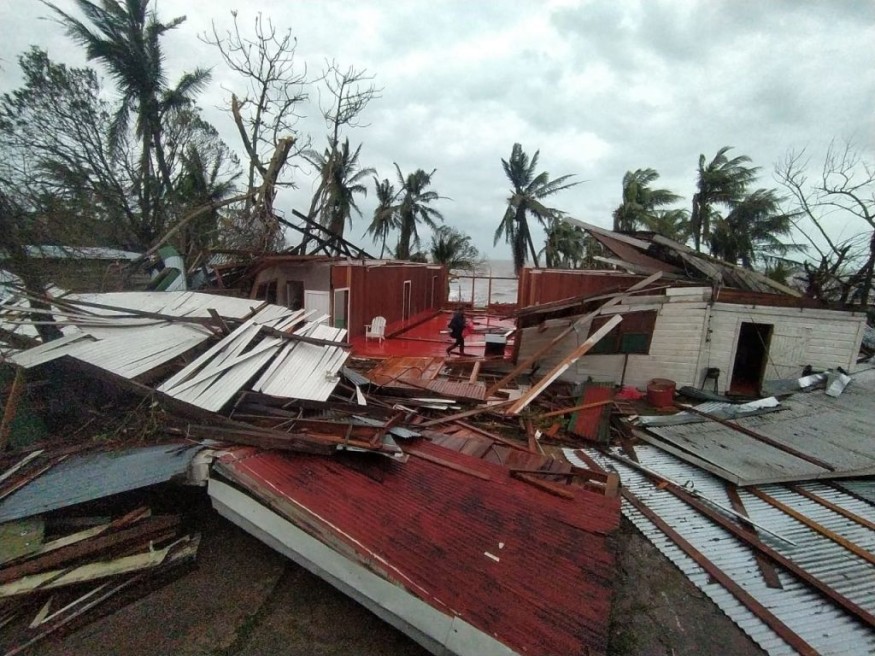Hurricane Iota has slowed down as it made landfall and swept Nicaragua and Honduras on Tuesday, although the storm threatened to bring heavy rains that could cause damage in Central America where most nations are still reeling from the effects of Hurricane Eta which slammed the region two weeks ago.
According to the National Hurricane Center, Iota's wind speed dropped to 65 miles per hour and was expected to downgrade to a tropical depression by Tuesday evening. Despite its weakening, however, Iota will likely bring heavy rains and flood northern Nicaragua, Honduras, and Guatemala with 10 to 20 inches of rainfall. Weather authorities said that the heavy rains could be deadly in areas where the soil is already saturated with water from Hurricane Eta.

First landfall in Colombia
The storm hit the island of Providencia as Category 5 before weakening as it moved towards Nicaragua. Authorities declared the storm's first death from the island.
READ: Hurricane Iota Hits Nicaragua as Category 4 Storm
Landslide in Guatemala
In Guatemala, a mudslide slammed into the village of Quejá when the previous hurricane Eta hit the mountainside. Authorities believe that about 100 people were buried in the mudslide. At least ten communities are still flooded from Hurricane Eta in Guatemala and the onset of Iota is likely to bring landslides, falling rocks, mudslides, and road closures, according to the country's meteorological agency on Tuesday.
Floods in Honduras
In San Pedro Sula, the second-largest city of Honduras which was badly hit by Hurricane Eta weeks ago, social media posts showed that the streets became river after hours of heavy rains.
In the remote eastern coast of Honduras, people continued evacuating from damaged and flooded homes.
Deaths and damages in Nicaragua
Two deaths were reported in Nicaragua on Tuesday afternoon as Iota hit the country as a Category 4 storm with wind speeds of up to 155 miles per hour. The deaths were two children who drowned in the La Solera river near the Pacific Coast.
Hundreds of families had to be evacuated from Puerto Cabezas as the storm ripped roofs from homes and hotels. The roof of a makeshift hospital also blew off in Puerto Cabezas. The hospital was set up to treat people affected by Hurricane Eta.
More than 48,00 families were housed in 569 government shelters all over the country.
According to authorities, the damage remains limited but the tropical storm continues to batter the country. Rivers are inundated, houses are damaged and trees and electric poles are felled by strong winds.
There is almost no communication in the city of Puerto Cabezas due to blackouts and felled electrical cables. Aid agencies had difficulty reaching their local contacts as at least 35 towns in the east and north had no phone service. According to Nicaragua's telecommunications ministry, Columbus Networks, the phone, and broadband provider was down due to flooding in Puerto Cabezas.
Iota is the strongest November hurricane on record to landfall in Nicaragua having a maximum wind of 155 mph.
READ NEXT: Tropical Storm Iota To Hit as Major Hurricane in Central America Next Week
Check out for more news and information on Hurricanes on Nature World News.
© 2025 NatureWorldNews.com All rights reserved. Do not reproduce without permission.





